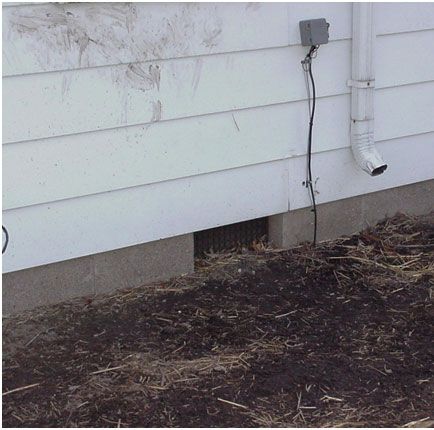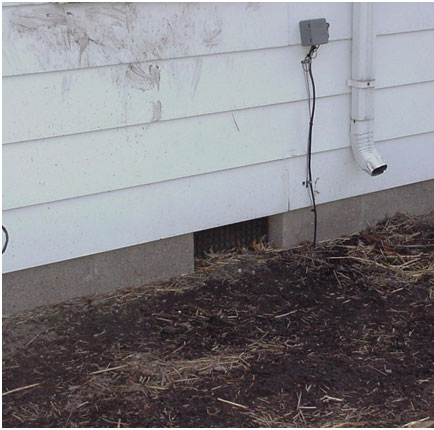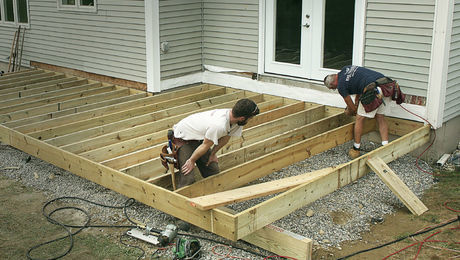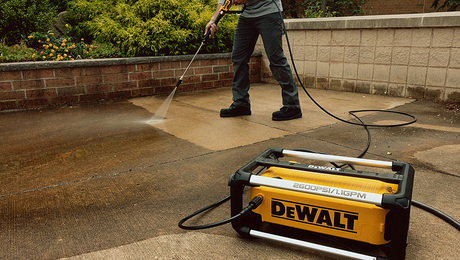
In seeking subjects for “Inspector” games, I stumbled across a potential gold mine: The U.S. Department of Energy’s Building America teams. These folks are constantly working to improve the houses we live in, both new construction and retrofits.
One team, the Partnership for Advanced Residential Retrofit, sent us the photo for the most recent “Inspector” game. The photo comes from Bill Rose, an architecture professor at the University of Illinois at Urbana-Champaign. Bill is a leading expert on building science, especially as it relates to old buildings. His book, Water in Buildings: An Architect’s Guide to Moisture and Mold, is one of the best books I have ever read. Honestly.
During the development of the game, Bill and I had an email exchange that boiled down to “Yes, what you want to write is fine, but there is more to the story.” Problem is, there is a lot more insight and information in that email than I could use in the “Inspector” game. I asked Bill if I could cut and paste his email into a blog so that I could share it with all of our readers. He thought that was a good idea.
Specifically, we were talking about the crawlspace vent acting as a scupper that would funnel groundwater into the crawlspace. I gave him a couple of options that we could do to fix the problem:
- Seal the crawlspace with pieces of block foundation.
- Add a window well around the crawlspace vent.
Both of us leaned toward sealing the crawlspace, but Bill wanted folks to know that while sealing a crawlspace is better than not sealing it, it is perhaps not much better than a poke in the eye with a sharp stick (my analogy). Crawlspaces, in Bill’s opinion, are a bad idea:
“The issue you tackle but which I evaded is the issue of closing crawlspace vents. I evaded the issue not because I don’t approve of closing vents—I do. My reason is a bit more complex than that. Crawlspace foundations were introduced in the ’20s and ’30s. (There were some interesting older examples, a church in Lamington, N.J., from the 1700s, some industrial examples like the Henry Ford Museum, and of course all the crawlspace partials attached to a full basement.) When they appeared back then, they were always greeted with a caution about moisture problems. I have anecdotal evidence they were never thought of as permanent foundations, and many were excavated to be full basements with a berm—the “Dutch” basement or “Michigan” basement. Seichi Konzo, who started the Small Homes Council here, did the excavation himself on his own house—which, by the weirdest coincidence, Paul Francisco from our shop currently lives in.
That changed right after the war. There is nothing in the record which states that “crawlspaces are suitable foundation types for residential buildings.” Instead, what happened was that some regulatory documents (FHA in 1942, BOCA in 1948) said, “If you have a crawlspace, you must vent.” Note that when this comes from a code body, it strongly implies that, once vented, crawlspaces will be suitable. We have since learned that venting does not deliver suitable crawlspaces, thus the enormous confusion in the minds of the public.
Now we’re saying, “If you have a crawlspace, then you must close vents.” Well, closed vents are better than open vents, no problem there. But the statement itself legitimizes crawlspace construction and implies that the results will be suitable once vents are closed. I don’t buy that. A crawlspace, closed or open, allows a high rate of exchange of soil gas with the house via barometric pumping, and soil gas may contain fungi and bacteria products (myco- and endotoxins), fertilizer volatiles, radon, smells, water vapor, worse stuff with ground contamination. A crawlspace is a settling cavity for dust, dirt, anything, and they are almost never swept clean. A closed crawlspace is indeed “a room in the house”—moreover, it is a very dirty room in the house.
My preference would be a product recall on the crawlspace. OK, won’t happen. So what I am arguing for is opening up to the idea of doing excavation in crawlspaces—to slope to drains or sumps, to create a stand-up space for tornado shelter or for full-height equipment, to remove debris and improve clearance, to improve inspectability, to make it cleanable for once, or to do as Konzo did—turn it into a real basement.
I don’t argue with those who call for closing vents. I’m on board there. I just don’t think that this closes the door on crawlspace issues. So your suggestion about the change is fine, and I go along with it. But I’m cautious about what our recommendation implies.”
In an upcoming issue of Fine Homebuilding, rather than covering how to excavate a crawlspace into a basement, we will cover how to seal a crawlspace. (Sorry Bill, it was already on a schedule—call me if you’d like to write The Case Against Crawlspaces). The author of our upcoming article, Jeff Tooley, is the son of another of the nation’s foremost building scientists, John Tooley of Advanced Energy in Raleigh, N.C.
In the meantime, read our article on sealing a crawlspace by Larry Janesky.
Fine Homebuilding Recommended Products
Fine Homebuilding receives a commission for items purchased through links on this site, including Amazon Associates and other affiliate advertising programs.

8067 All-Weather Flashing Tape

Handy Heat Gun

Reliable Crimp Connectors




























View Comments
I can only infer, as the text does not come out and say it: someone believes that crawl spaces are a bad idea, and that venting them only makes it worse. If that's what is asserted, then I must disagree.
Not only do I disagree, but the premise (we must eliminate crawl spaces because of poor grading) is akin to eliminating autos because some folks speed.
Let's look at the REAL cause of the vent acting like a "scupper to funnel water into the crawlspace:" incorrect grading. The pictured crawlspace is constructed wrong. Finding flaws in an error is no great feat; that's why errors are called 'wrong.'
Next, let's look at the chain of reasoning built on the bad premise that crawl spaces are inherently wrong. We are urged to 'seal' crawl spaces, to keep water 'out.' IMO, you might as well ask a dog to meow.
Let's back off, and look at what crawl spaces are intended to accomplish- and maybe we will understand why venting is the solution, rather than the problem.
Crawl spaces are the natural consequence of a pillar & post foundation. As with other foundation methods, this one has its' advantages and its' drawbacks. There can be no 'perfect' method, suitable for every application. If one sites a crawl space so it must be lower than everything around, it simply must collect water. As with a lead balloon, the fault lies in the design, not the method.
Keeping water out? Good luck. Consider all the issued that arise when we try to 'seal' basements: cracked slabs, imploding walls, and moisture troubles galore. Perhaps we're better off if we instead make sure the moisture has some way out.
Step one is giving the water some place else to drain. I've seen homes whose crawl spaces were solid sheets of flowing water during storms- yet had no moisture or mold issues. You must let the moisture out!
Perhaps you can help things along with a sump and a pump. Perhaps by grading the yard and adding French drains. Yet, you'll never get ALL the water out. Even in desert climes airborn moisture can condense in the cooler crawl space- what then?
Well, that's where ventilation comes in. We can try to make it happen 'naturally,' or we can use fans and ducts to help it along. The key, though, is to get MORE air under the house, not less.
Does this mean we might want to make other changes, such as insulate floors? Of course it does. Yet, we still have the benefits offered by crawl spaces: fewer compaction / settling issues, access to utilities, and ease of construction.
"crawlspaces: A bad idea, should be illegal"
In my 36 year career as a remodeling contractor I come across statements like this and just shake my head.
Illegal?... Why do people think the government is a weapon they can use to beat up on others that don't agree with their "new age progressive green awakening?"
Thank you Amish electrician for your sensible reply, even if you stated the obvious.
Every house foundation is different. No "laws" apply to the whole. My 1957 crawlspace is in perfect condition.
Your example picture is full of bad decisions like the location of the vent and gutter downspout. You mentioned already the other issues like grading.
Intead of discussing the importance of grading, proper closable vent locations 8-12" above ground level, gutter down spout locations and rain water displacement, a sump system added if you don't have one, maybe a radon vapor barrior with a vent pipe, a concrete floor and a de humidifier, and a radon gas indicator, the article here wants to start with a title saying we should demonize the whole design and make it illegal.
Am I right or did I miss something? Is this satire?
I've seen crawlspaces cleaner than their kid's rooms!
What is the difference in a full basement and a crawlspace with the features I just mentioned? I'll bet I've remodeled over 100 basements so far and this is the first time I've read anything like this. Maybe I missed the point.
illegal?...BS.
What's next? Random window and appliance compliance police inspections? Eccessive Electricity fines? Multiple car / non prius or GM volt use tax?
You know....I think we should fine people that have black roofs and make them illegal. Surely they soak up more heat and therefore take more energy to cool down in the summer time.
Maybe we can limit water and the sq. footage of grass per house too. Those selfish waterers are stealing from the rest of the world! Where's my pitch fork? Burn em to the ground.
Can't we just use our common sense and continue to work together and solve our problems without using the "I" word? (illegal)
I'm sorry if this came off disrespectful.. certainly was not my intention. Thank you
Please.............really............... illegal. Give me a break, don't give big bro any more ideas. Sometimes when you say things it comes true. So you better watch out for what you say. I am not going to repeat what Amish and Mark said. Which by the way is dead on. But, I thought this was Fine Homebuilding. You know, to build things nice, how to repair things to work better. I didn't think it was about how to impose more restrictions in our lives.
You want to make suggestions on how to make that crawl space work better, be my guest. But, stop with the suggestions of more laws and regulations. If it wasn't your intentions it sure came out that way. Maybe we are a little more sensitive with more laws coming out of the EPA.
Radon .... RADON .... how could we forget?
Crawl spaces are just about the only manner of foundation that provides any protection against radon entering our homes from below.
Radon comed from the earth itself, a gas produced by the decay of radioactive elements present in granite. Slightly radioactive itself, exposure is best reduced. The best way to do this is by giving it somewhere else to go, besides inside the home.
All basements do is let it enter the living spaces of the home. Ditto for slab foundations. Only a vented crawl space offers a chance that the gas will be re-directed to the outside, going around the home itself.
Funny how quickly we forget yesterdays' hysteria ... and kowtow to the latest scare merchant.
Folks, I appreciate your concerns, but there are a few facts to consider when you're talking about the pros and cons of crawlspaces:
1. Sealed crawlspaces are different scenarios completely from the pier foundations often found in warm climates, so nobody is saying we should eliminate those.
2. Vented crawlspaces like the one in the above photo just don't work the way many people think they're supposed to. If you have a cool crawlspace and it's hot outside, the laws of thermodynamics (basically: hot always moves to cold, and wet always moves to dry) guarantee that the humid summer air will go into the vents and condense on all of the cooler surfaces, causing mold and rot. This also means that radon will often not go out through the vents, but rather up through the leaky floor of the house above. In places where it's cooler outside, you wouldn't want to vent either because you'd be throwing away heat that should be keeping your house warm.
3. People usually can't decide whether a crawlspace is inside or outside the conditioned space of the house. If you want to vent your crawlspace, you better air-seal the underside of your floor, and probably insulate it too. Otherwise those gasses and that mold you're trying to get out of the house will just leak up into the house. Alternatively, you can install a vapor barrier on the crawlspace floor and seal the space up tight.
There's more to it than this, but the ideas presented in the article above are based in real-world evidence documented by many builders in many places. I'll try to collect some actual examples if anyone is interested.
- Rob Wotzak, Fine Homebuilding Web Producer
In our area basements are not an option, if you dig 3 feet into the ground you hit water. Crewl spaces are the only affordable option. In my opinion the crawl space perimiter wals should be insulated and a vapor barrier installed to completely seal the crawl space. I have seen this done with the addition of a dehumidifier with excelent results. The last thing we need is more goverment regulation or intrusion!
Lets have some logic here.
Radon gas, is in the ground in some places. It leaks to the surface - there is no pressure behind it!
A simple sealed Radon proof plastic sheet covering the base of a home is all that is needed to keep the gas outside.
As mentioned above. Heat always moves to cold!
Insulating a crawl space wall is a total waste of both money and time, as there is very little heat in a crawl space - better to place the insulation closer to the heat source.
The heat passing through a floor comes from the warmish air above and the radiation and conduction from heaters. Best to have the insulation above the joists where it helps to keep the room warm. Insulation immediately below the floor is second best.
As a home inspector for the past 26 years along with being in the trades for many years prior, I have seen many crawl spaces and have observed first hand what can work and what can go very wrong.
Along with many of the other suggestions, I might add one other. If the builders were to take the dirt from the ditch dug to pour the footers and have it spread out inside the crawl space by a laborer and then covered with stone and a heavy duty vapor barrier running up the walls and sealed wherever there is a seam or a pier, it would be above the outside grade to begin with and would have a very hard time collecting water from outside. It can be done easily before the floor joists are installed. This often requires an extra layer of block or additional concrete for the foundation, neither of which many builders necessarily want to pay for. I can attest to the fact that it does work in every case. As mentioned by a previous poster, "There is no perfect solution." In light of that, I do believe it helps to stack the odds in your favor.
So, without going into my usual soliloquy when I talk to builders or homeowners concerning crawl spaces, I just wanted to add that one thought. If the inside grade is higher than the outside grade, water can't puddle in the crawl space. Humidity collecting on cold objects in the crawl is another story but there are ways to deal with that as well. I am not an advocate of introducing either positive or negative air pressure in crawl spaces as was also mentioned earlier. That perhaps is a topic for another discussion.
Of course, there is still the fact that the ambient ground temperature stays around 57deg. F. which is almost always below the dew point during the humid Summer months here in Virginia. Closing the vents is a practical idea in humid climates. Moldy conditions in many crawl spaces are a major problem in my region. They are preventable with a little forethought and a basic understanding of what makes mold grow in the first place. Just remember, mold needs moisture to grow. Take moisture out of the equation and your problems start to fade away.